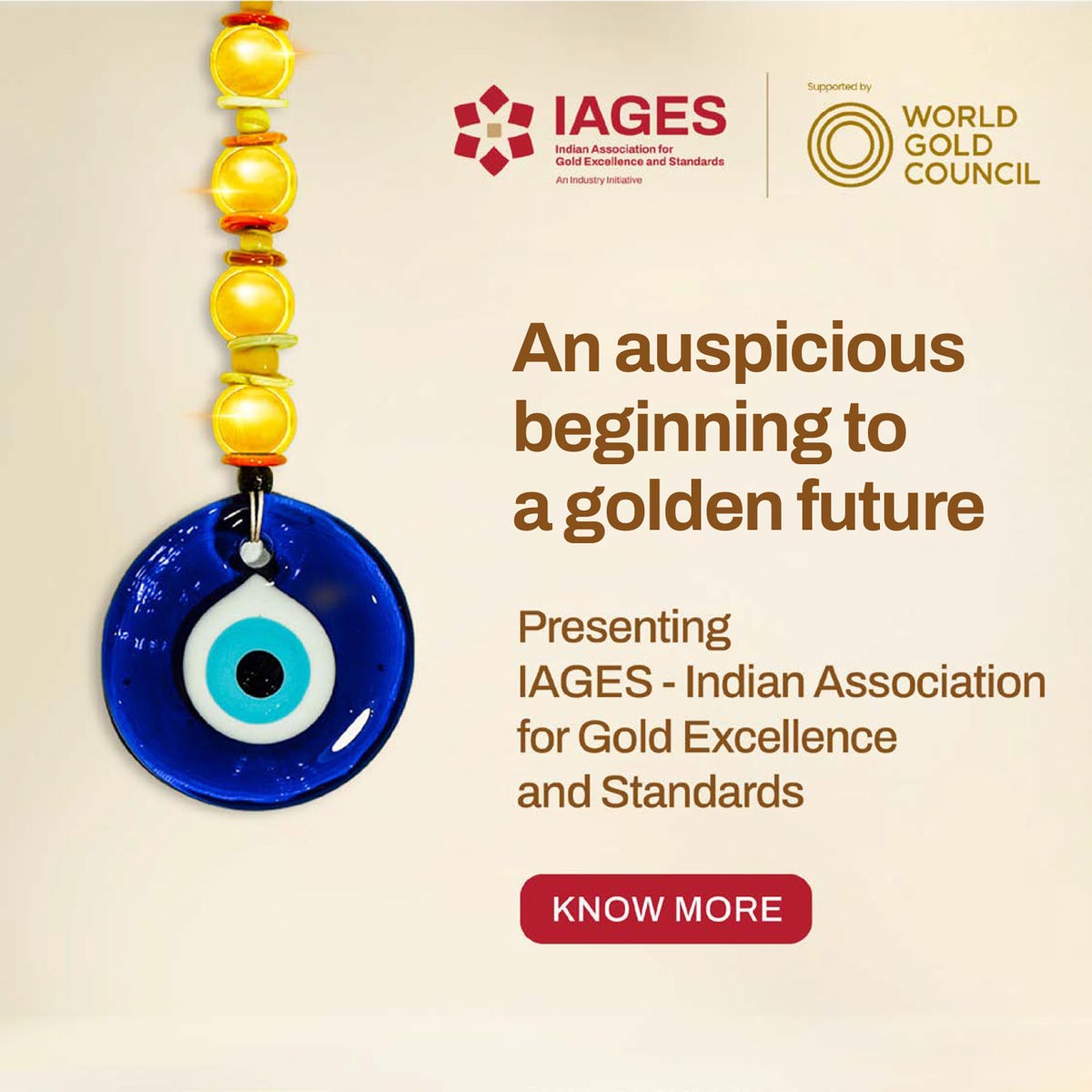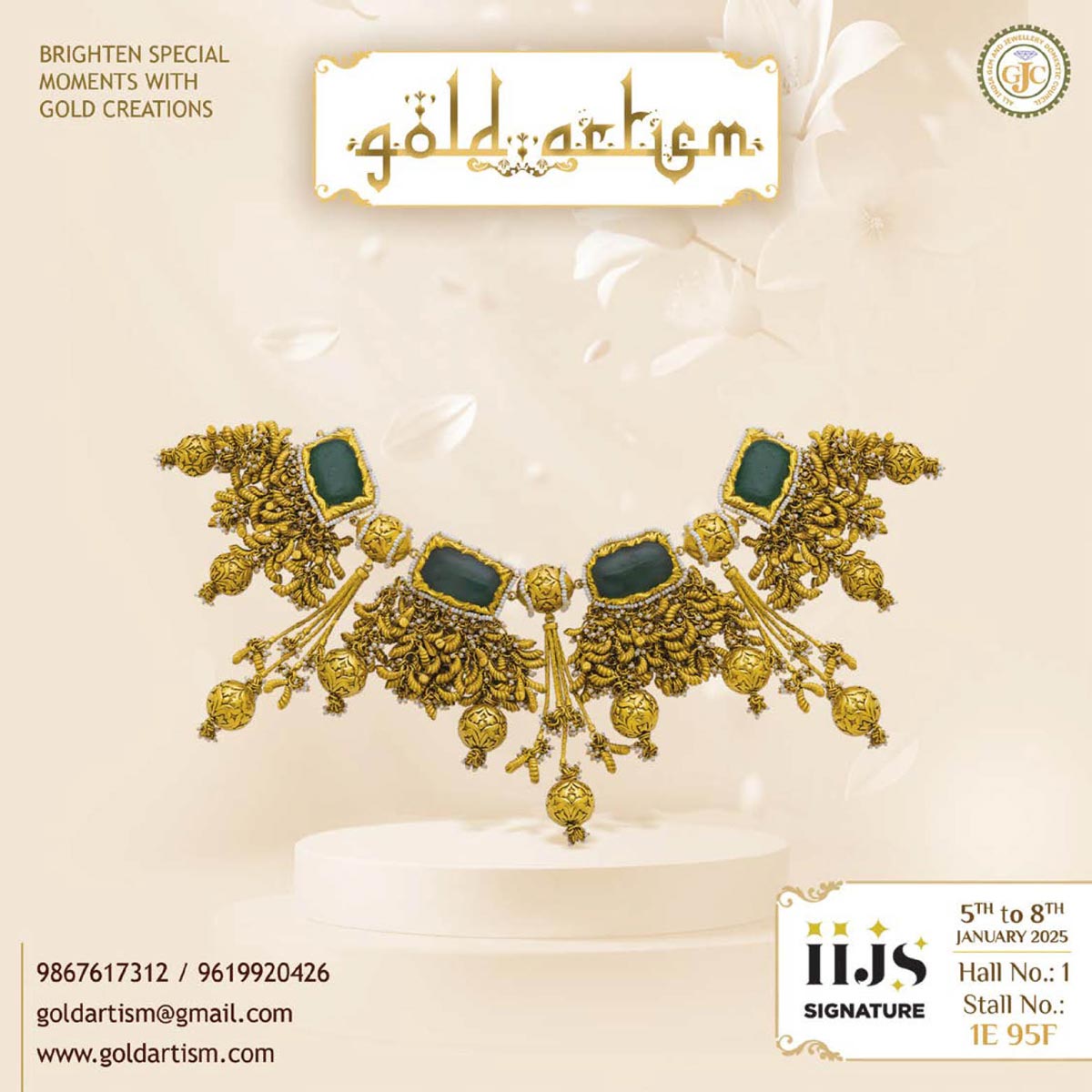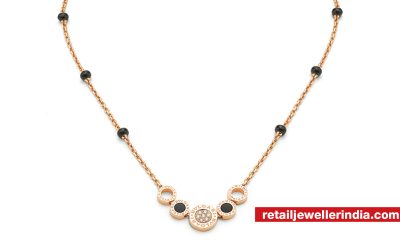RJ Market Watch
GJC’s virtual meet over mandatory gold hallmarking exposes key operational lacunae, seeks clarity from BIS
Gold jewellery will come under the ambit of hallmarking for sure now. A week before, the government announced that it is fully equipped to strike a pan-India curb on any retailer selling gold jewellery other than 14, 18 and 22 carats respectively from June 1, 2021.
The move, although aimed at a clampdown on carat shortage and associated harassment faced by gold buyers, has created several inconveniences for the retail jewellery sector. GJC held a virtual meeting on April 21 over Zoom and on Facebook to address issues the sector can face at ground level.
The discussion was presided over by six eminent panelists from across the Indian jewellery sector and consultancy. Former GJC chairman Nitin Khandelwal (Khandelwal Jewellers) and Ashok Minawala (Danabhai Jewellers), GJC directors Dinesh Jain (P. M. Shah & Co. Jewellers) and Rajesh Rokde (Rokde Jewellers), GJC-ZCM DD Karel and CA Bhavin Mehta (Partner Dee Cee)headed the discussion.
Dubious test results of same jewellery piece
The meeting started with the overarching issue of contradictory tests by several hallmarking centers. Several panelists pointed out instances when a sample of jewellery hallmarked by one center gets rejected by test results from another. “With just over 900 hallmarking centers and a country with tens of thousands of pin codes, it is difficult for a jeweler to trust a center if the BIS itself can’t trust its centers,” said Jain. On that note, a jeweller from Shimla asked how retailers of the city, which still doesn’t have a hallmarking center, will cope with actions effective from June 1. He was asked to write to BIS to address the issue.
The Indian jewellery sector is centuries old, to say the least, and customers have put their trust in jewellers down generations to make heritage pieces which often return to the market as antique jewellery. There is an entire sector of retailers dealing with antique jewellery which are centuries old and have buyers in the premium category. Assessing the purity of such pieces made a century before just for the sake of homogeneity is far-fetched, remarked Khandelwal. Also, if past purity standards mismatch with BIS specifications now, then an entire sector of jewellery is deemed misfit for business. This apart, jewellery manufacturing involves assembling pieces from various parts. Certifying such established norm of heterogenous production with a homogenous product is impossible, maintained the jeweler.
Echoing Khandelwal’s sentiment, Karel highlighted how random jewellery sample test by BIS discards an entire lot of jewellery if the sample is found faulty. “When we reasoned with the top executives of said hallmarking centers about the heterogenous nature of jewellery, they said involving so many parameters in jewellery testing will complicate the process,” said Karel.
Who all have to register for hallmarking?
Clearing confusions, CA Mehta underlined that under section 15 of the hallmarking act released on January 15, 2021, anyone who stores and transports gold jewellery must apply for a BIS registration. This puts manufacturers, wholesalers, retailers, factory owners and even freight forwarders to deal with hallmarked jewellery. “We ask every part of this value chain dealing with gold jewellery to get their pieces hallmarked to prevent punitive action,” said Mehta.
Retailers protest against purity limitation
While understanding salient features of the act, the industry was unanimous against the restriction on gold purity. Khandelwal said that contrary to BIS’ claims, luxury brands such as Prada are selling 999 purity gold jewellery. Rajesh Rokde said 23, 20 and 24 carats still remain on demand for the majority of rural jewellery buyers. “Rural gold buyers don’t always buy jewellery for fashion. To them, it’s a source of investment, which will be shortened if the government forces us to restrict their ages-old jewellery preferences,” said Rokde. Calling this a ‘license raaj’, Jain supported Rokde’s statement, adding that BIS should have all purity under its hallmarking ambit for honest and profitable jewellery trade, instead of this standardization apparently favouring its extended arms.
Penalisation and Digitisation
Clauses for penalization became the biggest concern regarding the third-party assessment of Indian gold jewellery industry. While Mehta said that the industry should ask for a positives list from BIS, he added that point-of-sale hallmarking should be the norm. Highlighting the inconsistencies between the clauses of the act and BIS FAQ information, Mehta said, “According to the clauses, even a person who resells jewellery is a consumer. By that logic, a retailer who buys hallmarked jewellery from manufacturers and sells from his showroom can be inspected if there is something wrong with that jewellery. However, that onus should not reside on the retailer as he is sourcing hallmarked jewellery from the manufacturer. We seek further clarity on this.”
Panelists and guests talked about the inadequacies in BIS rules with regards to under-caratage. On the one hand, BIS says that in case a consumer reports about under-caratage of gold jewellery, the retailer concerned should repay the customer an amount equal to the market value of twice the purity deficit. While that sounds like a welcome settlement between the retailer and buyer, authorities have issues show cause notices to retailers, forced few players to shut business and suspended licenses of many instead of taking the former route.
A crucial point debated upon was the fallout of a foolproof digitization system that generates a hallmarking code with total BIS control. Asking if digitization will invite 24×7 CCTV monitoring of jewellery sale inside showrooms, Khandelwal said that leakage of such data will ruin the brand value, design sensitivity and goodwill and business of a jeweller. Jain termed this move an attempt to control the industry. The process although is simple, stated Mehta, explaining that every jeweller will now have to buy a software and a BIS personnel will train the jewellerconcerned to operate it and align himself/herself with the nationwide ambit.
The meeting proceeded with the participants agreeing on the need for a media activity on behalf of the jewellery community to initiate a dialogue with BIS. Accepting the benefit of limited liabilities a hallmarking registration provides, the panelists also highlighted that the registration fee is reasonable. “Hallmarking has allowed ethical jewellers to survive in this business, so we welcome it. We’ll work with the government so that the registration fee is levied over 5 years and not annually, to reduce cost-related inconveniences,” assured Ashok Minawala.
Jewellers harped on the sentiment that the sector has issues with some clauses of the provision and not the law at large. Concluding the meet, the panelists observed that the sector should be permitted to sell jewellery with prevalent purity standards and be assured of freedom to do business ethically.
Courtesy: Retail Jeweller India News Service




 Daily News2 months ago
Daily News2 months agoBvlgari adds designs to its pathbreaking mangalsutra collection ahead of wedding season

 Daily News1 month ago
Daily News1 month agoTrent, a TATA subsidiary, launches lab-grown diamond brand ‘Pome,’ shares surge 7.67%

 Daily News2 weeks ago
Daily News2 weeks agoMalabar Gold & Diamonds launches ‘Heritage Show’ in Mangalore, featuring jewellery inspired by Maharanis

 Daily News3 weeks ago
Daily News3 weeks agoSavji Dholakia’s visionary water conservation project ‘Bharatmata Sarovar’ reinforces commitment to sustainability























